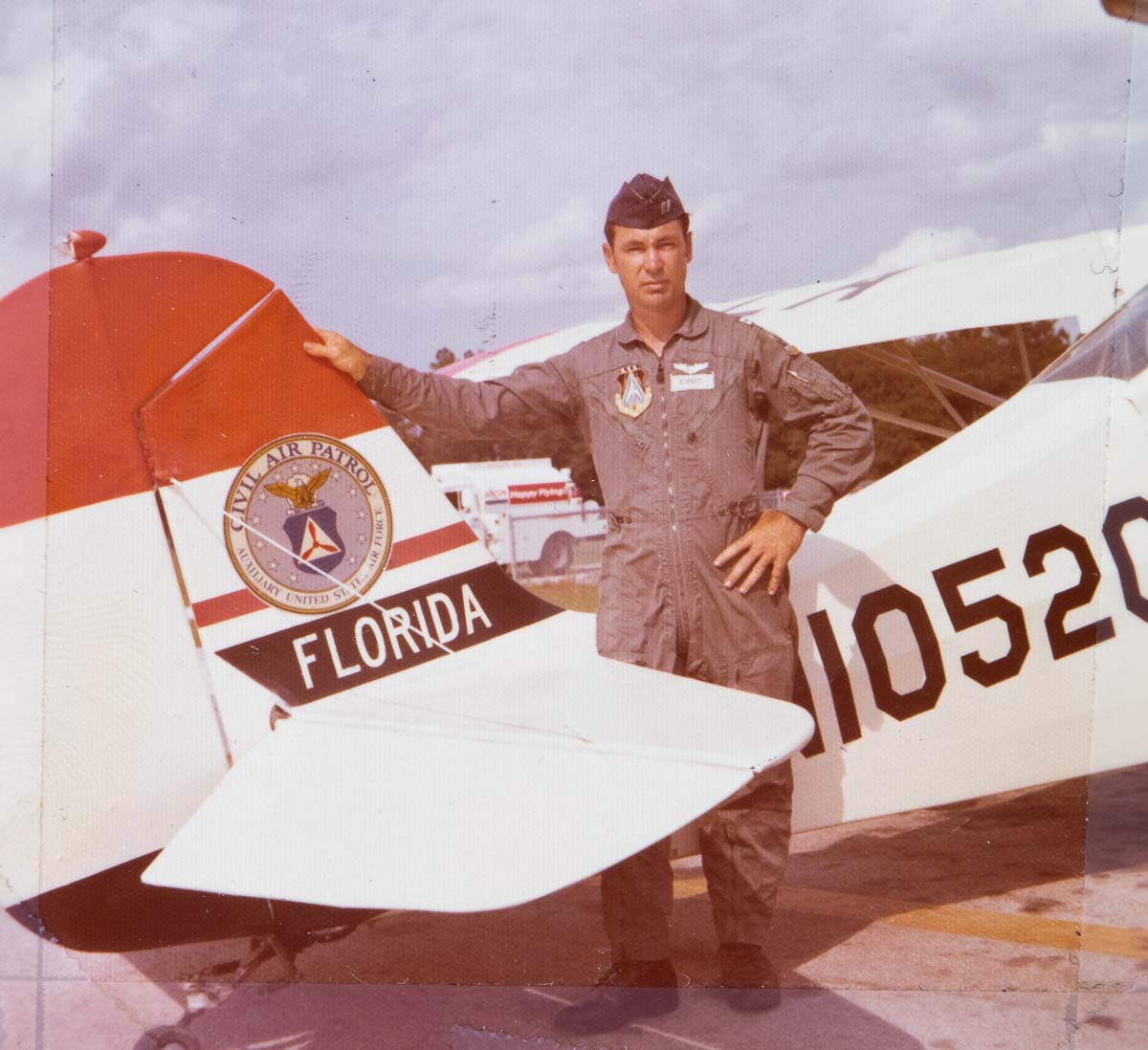Aeronca L-16 Plane

Flight is integral to the Civil Air Patrol mission. From aerospace education to search & rescue missions, the Hernando County Composite Squadron works with pilots and planes across the Florida Wing and nation.
There was a time, however, when we had our own Civil Air Patrol plane assigned to us. That plane was an Aeronca L-16. It served the squadron and community in search and rescue missions and training exercises throughout Florida. This is the history of that plane.
Table of Contents
General History of the Aeronca L-16
General History of the Aeronca L-16
When compared to the P-51 Mustang, F-15 Eagle or F-22 Raptor, the history of the L-16 plane is not well known. Nevertheless, the plane played an important role with the Civil Air Patrol, and the U.S. Army before that.
Back in 1947, the U.S. Army decided to upgrade the Piper L-4 Grasshopper. The L-4 Grasshopper, better known to the civilian world as the Piper Cub, served the Civil Air Patrol as a patrol plane in our mission to protect the Eastern Coast from German U-Boats during World War II. In the United States armed forces, the L-4 served in a similar role as a spotter plane.

After the war, the U.S. Army procured the Aeronca L-16 as a replacement for the L-4. Although similar to the L-4, the L-16 was a different aircraft. For example, there was significantly increased visibility in the L-16 due to the extension of the plexiglass far beyond the rear of the wings.

The L-16 used a fuel-injected 4-cylinder engine that produced 80 horsepower - 15 more than the L-4's engine. Yet, the L-16 required more distance for takeoff according to the U.S. Army test pilots. In their testing, they reported an addition 10' were needed. This was potentially offset by a steeper angle of climb that may have provided improved clearance of barriers as compared to the L-4.
According to The Field Artillery Journal (Nov-Dec 1947, page 356), the U.S. Army pilots determined the L-16 had a number of positive benefits and "If proper care is given to the transition training of pilots in the L-16, it will achieve the same if not better results than the L-4."

After the Korean War, the U.S. Army transferred many of the L-16 planes to the Civil Air Patrol. From the 1950s through the 1970s, the L-16 served the country in search and rescue missions, aerospace education, emergency medical supply transport, disaster response and many other missions.
History of Tail # N10520
Around 1955 (we don't have an exact date,) our L-16 was transferred from the U.S. Army to the Civil Air Patrol. There were many L-16 planes acquired by CAP through U.S. Army transfers during this time.
After the Hernando County Composite Squadron (then named the Brooksville Composite Squadron) was chartered in 1973, the squadron experienced rapid change. Reflecting the increasing importance of the squadron, the Florida Wing transferred the Aeronca L-16, tail number N10520 to our custody in 1974.

Although the plane was in need of significant refurbishment, 1st Lt Glenn L. Chase flew the plane from Miami to Brooksville. 1st Lt Chase and his brother repaired and updated many parts of the plane including mechanical work, recovering the seats and bringing the plane into operational condition. All work was completed without charge to the Civil Air Patrol, but corporate aviation insurance was paid for by the squadron.
Orientation Flights

Orientation flights are an important part of cadet life. As early as possible, the Civil Air Patrol likes to get cadets into the air. The sooner they can experience flight, the quicker they will often become more engaged in the aerospace education mission of CAP. It's one thing to hear about yaw, pitch and roll. It is completely different to be in the air and experience those things for yourself.

Having N10520 at the squadron allowed the certified pilots in the squadron to provide frequent orientation flights, or O-flights, for the cadets. Additionally, our pilots provided O-flights for cadets at other squadrons and members of the local Air Force JROTC unit.
Missions
Pilots flying N10520 participated in several search and rescue missions throughout Central Florida.

On November 2, 1975, N10520 was piloted by 1st Lt John Balough on Search Mission 6-1111. With mission observer SM Bill Phillips, they participated in a multi-state search mission for an overdue aircraft flying through Florida. Our squadron was unable to locate the plane in our area of operation.

Additional missions, both training and "real world," were conducted. As this information is researched and documents are digitally preserved, it will be added to this page.
Where Is It Now?
In 1976, the Florida Wing deemed N10520 was ready for surplus. After more than 30 years of public service, the L-16 was retired and was sold to a private party in Naples, Florida.
Today, the Federal Aviation Administration (FAA) reports that the plane remains both airworthy and in private hands. Although it is no longer in Florida, N10520 continues to keep the dream of flight alive here in the United States.
If you have any additional information on N10520, the missions it was involved in or any photos of the plane, please contact us. We would love to hear more about our old plane!








